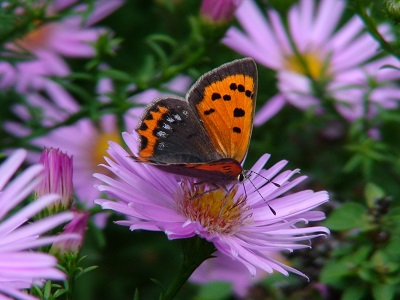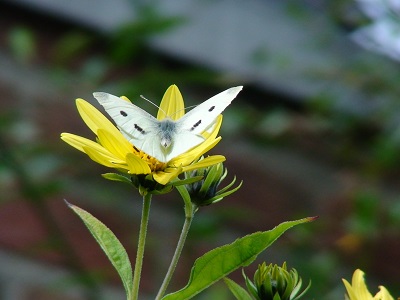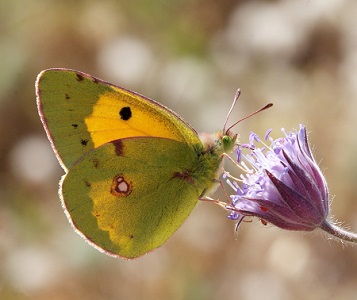|
7. Continuously changing environment
The environment on Earth changes continuously. The change can be gradual or can be unpredictable. The lifecycle of most species is adapted to the regular yearly succession in seasons but quite a lot of species have a lifecycle that is specialized in surviving unpredictable periods. Moreover, some species thrive by drastic changes.
The continuous flow of solar energy that reaches the Earth is the driving force of plant growth. Part of this energy turns into biomass. A continuous series of changes leads to the origin of forest, the growth of bogs, changes in soil and hydrology, which finally creates the landscape. These kinds of changes take place gradually.
The yearly alternation of the seasons brings about regularity in the rhythm of life. The changeability of the weather is also an important issue. Low pressure air masses drifting from the Atlantic Ocean towards Europe, bring about a changeable maritime climate in the Benelux.
The composition of the local fauna will tell us that either it is adapted to predictability or to the survival of unpredictable events or even to continuous changes.
Adaptations to the seasons
A lifecycle adapted to predictability is easy to realise by a kind of clock that tells what day of the year it is. The most reliable is the cosmic clock based on the rotation of the Earth around the Sun. On 21 March and 23 September day and night are of equal length, the dates of the equinox. Experiments on insects proved the lifecycle in many species is controlled by changes in daylight length, resulting in fixed dates for the various phases of the lifecycle.
Seasonal changes are accompanied by changes in temperature and rainfall, simple factors to which the lifecycle can be adapted easily. Unfortunately these factors are not predictable and an unexpected period of adverse conditions may cause a high mortality. The only way for survival of a population is to maintain a genetically fixed variation in the lifecycle.
Surviving changeable weather
A population is able to survive unpredictable adverse periods by a spread in the development of the larvae or pupae and by the presence of sturdy adults. A comparison of the composition of the butterfly fauna of Ireland with that of the German federal state Thüringen shows clearly that a moderate continental climate has a much richer butterfly fauna than a maritime one with its vague seasonal succession of cool summers and mild winters and with periods of unseasonal weather which may occur at any time of the year.
The Irish fauna consist of only 30 species (Asher et al. 2001) although its surface is four times bigger than Thüringen with its 114 species (Thust et al. 2006).
The composition of the faunas shows some remarkable differences: the fauna of Thüringen has relatively many species which hibernate as egg or as a first instar larva. The species of Ireland pass the winter relatively more often as pupa or adult. In the first case the lifecycle needs a predictable seasonality, whereas in the second one the insects are in stages which can endure changeable weather better.
Taking advance of changes
Wind and streaming water cause changes in the natural development of a landscape. This process has always existed and it is to be expected that certain species have evolved which are specialised to deal with these processes. These species are characteristic of dynamic environments which occur along steep slopes, river banks and sea coast. These are also the species that potentially will inhabit manmade landscapes. The family of the whites and yellows (Pieridae) includes several species specialised to live in this kind of environment.
A bushfire may destroy a large area but in the following years there will be a recovering phase and this may be a very favourable period for many species, for example the small copper (Lycaena phlaeas), the small white (Pieris rapae) and the clouded yellow (Colias crocea).
| |
|
|
|
|
|
Lycaena phlaeas.
Photograph: Rosita Moenen ©.
|
Pieris rapae.
Photograph: Rosita Moenen ©.
|
Colias crocea.
Photograph: Jeroen Voogd ©.
|
A habitat with a continuously changing environment will be populated by species that can move quickly to find a more suitable environment, grow fast and have a high reproductive rate.
The most common species is the small white (Pieris rapae), next the small copper (Lycaena phlaeas) and the irregularly appearing clouded yellow (Colias crocea).
However, the latter species is unable to overwinter in our climate and the population has to be re-established annually by fresh migrants. |
Artificial changes
Man causes many different changes in the natural landscape. To some extent this will favour the biodiversity and many species occur in semi-natural landscapes, but as soon the human influence becomes to strong, the biodiversity will decline drastically. Only the species thriving well in dynamic landscapes will survive. All subtle changes and a lot of the biodiversity will disappear when nature is taken over by intensive agriculture, dense building and other human activities.
Hereditary changes
Not only changes in landscape are involved in changes of the biodiversity, within populations changes can take place in hereditary characteristics. These may cause small changes in appearance, way of living and in survival success. In the practice of nature conservation it is a basic assumption that species do not change. Disappearing and increasing numbers of species should be related by changes in the environment. The species is considered as an indicator of particular environmental quality.
At present many articles concerning climate change, in which figures based on appearing and disappearing species are used as proof of the climate change. However, we must not forget the hereditary changes which can also happen. There are some experiences of that phenomenon within the butterflies. The fact remains that species of a boreal or mountainous distribution are in decline in our lowland area, but not all newcomers have to be those profiting from a warmer climate. Hereditary changes and changes in the landscape may also be involved.
One example is the breeding stock of the large white (Pieris brassicae), which had been kept at some laboratories for over half a century for experimental work and education; it proved necessary from time to time to introduce ‘fresh blood’ from the wild to prevent the risk of extinction of the stock by inbreeding.
Another example is the keeping of a stock of the large copper (Lycaena dispar batava) to produce material for introduction experiments. The butterflies were kept in small cages of about 80 x 40 cm containing about 20 butterflies each. Only those butterflies which were willing to mate in such a small cage reproduced. This was a strong selection on the sexual behaviour of the adults. After about 30 years several differences appeared when compared with the fresh ones from Friesland. The females looked a little different, the hibernation larvae kept their green colour and were synchronous in ending diapause (Bink 1970). The latter two traits are not favourable for a population living in nature under fluctuating conditions.
Precarious future
The large copper known from the reed-beds of southeast Friesland and northwest Overijssel, occurred up to about 1850 also in the marshes in England, in the counties Cambridgeshire and Huntingdonshire. The differences in appearance between the Dutch and English butterflies are very little and both populations should have the same origin, the historical ‘Doggerland’ which disappeared under the North Sea about 6000 years ago as a result of rising sea-levels. The populations in England and in the Netherlands were relicts of the ancient one.
The original peaty landscapes contained raised bogs criss-crossed by rivers, which locally widened to lakes; an ideal situation of developing gradients between heath-like vegetation and reed-beds along the rivers and lakes.
In England these marshy landscapes were drained for agriculture and the large copper lost its home and became extinct. In the Netherlands the raised bogs were dredged for peat, the main fuel source in the 17th until the 19th century. This peat dredging created small right-angular lakes. The smallest ones were covered by a reed-bed within half a century, but the largest ones still exist as lakes after two centuries. In years of disaster after dike bursts the whole area was inundated and big lakes arose. In this man-made landscape the large copper found a new home. The total surface of this peat-land area was large enough to contain the variety of vegetation in succession from reed or sedge to bog or carr. However, stabilising the water level in this area improved the development into woodland, an unsuitable landscape for this butterfly species.
The large copper has for a long time been the subject of protection and introduction under the auspices of nature conservation. In Ireland, England and in the Netherlands there were many trials to establish new populations in landscapes that seemed suitable at the first impression.
None of these introduction trials proved to be successful and this butterfly can be considered as the record-holder of reintroduction failure.
|




